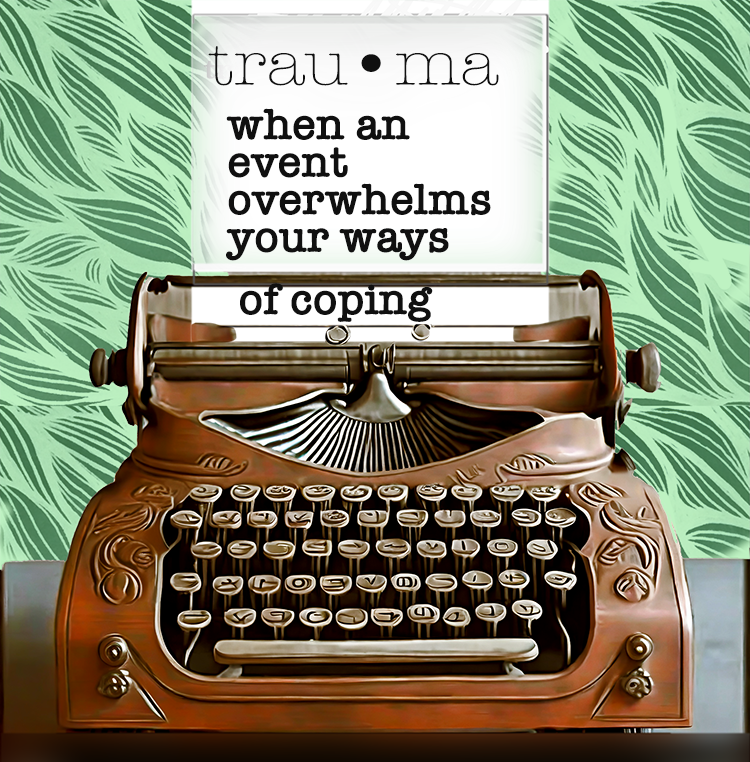Three Definitions
We can’t cope with fear anymore. We disintegrate internally. (Curt Thompson)
We experience an acute or chronic shock to the system which affects our ability to calm ourselves down and see events from a broader, more coherent perspective. (Figley)
Trauma is a psychic wound that hardens you psychologically that then interferes with your ability to grow and develop. It pains you and now you’re acting out of pain. It induces fear and now you’re acting out of fear. Trauma is not what happens to you, it’s what happens inside you as a result of what happened to you. (Gabor Mate)
Nita’s Thoughts
I believe it is helpful to study all of the above definitions.
When I meet with people I begin by thinking of the ways the individual coped with terror or loss before the event that is currently an hourly torment, came into their narrative. I look at relational strengths, physiological health, — – even economic strengths.
CASE STUDY #1
For example, consider one family dealing with the aftermath of a flood that destroyed their home. In case study one you see the event move them immediately toward poverty, disillusionment, fear (or anger), and possibly a divorce. For decades they might remember this flood as THE MAJOR trauma that altered the capacity for the family to thrive for a decade.
CASE STUDY #2
Lets’ look at another situation of a weather disaster that destroys a home. In this situation there is a more robust range of coping mechanisms available to the family. They manage to mobilize their own ways of surviving.
In this case you would see the family move into a hotel for shelter. The parents would work efficiently with insurance companies and –since the extended family is intact, you would see them listening to fears and losses as they bubble up to the surface. In this scenario aunts and uncles bring home cooked meals to the hotel and spread the dishes out on the ironing board for a makeshift buffet table.With this family, if you asked them in ten years how they metabolized the flood, they might talk about how odd it was to have an indoor pool for three weeks and they might chuckle about the ironing board that doubled as a table in the hotel room.
The first family case study::
Years later members of the family would speak of the flood as a crushing event that spawned PTSD episodes for the children. Ten years after the flood they might report intrusive thoughts about tornado warning sirens. A child might say that any one making a passing reference to the flood causes them a tremor of fear.
WHAT IS DIFFERENT?
The difference is the coping strategies that were within reach before the event happened. Think of it as punching your fist through drywall. Some homes have six feet (instead of the usual 18 inches) between the studs that hold the wall up. In this room the walls would cave in with five hits. In another house, let’s say the builders were overly attentive to structural integrity and built it as a fortress. In this build the studs are twelve inches apart. In this house when trauma strikes– the blow is more contained — it lands on a hidden but solid infrastructure. This makes the repair more localized and possible to complete in months instead of decades.
Using this type of exploration is helpful.
Ask a few questions, like:
- What have they already tried that has been helpful?
- What did they learn as children about loss and random events of shock and change?
- What resources are on board?
By doing this you have a shorthand way to discern whether or not you are hearing a person deeply drowning in the throws of trauma.
Trauma will aways be present when the person you care for is depleted of ways to cope with shocking events.
You will notice that their usual ways of rebounding from a bad event are swamped. The speed or urgency of the event is coming at them faster than they can reach for a coping strategy. In other words, a single punch is making the room fall down at their feet. This is trauma and next you look for fight, flight and freeze responses.
| not assigned | The Trauma Experience |
Related Posts
- 3 Trauma Stories & 3 Take-Aways
- Automatic Obedience and Other Reactions
- Distortions of Beliefs
- Efficacy
- Exile Trauma
- Overfunctioning can be a Side Effect of Skipping a Talking Day
- Part Two- Unattainable Memories
- Paucity (Speech Pattern)
- The True Self & Trauma
- Time is Scrambled/*not linear
- True Self Part #2
- Unattainable Memories
